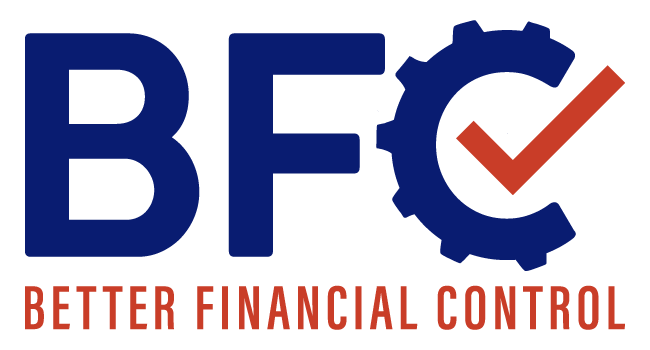In last week’s blog, we explored the three principle steps to creating an effective business strategy.
This provided the groundwork for the next stage: implementing productive strategies that will create consistency, security and productivity for years to come.
Without the information we gathered in the first blog of this series, this week’s steps will be based on guesswork and false projections, a vague estimation of your company position that will lead to an ineffective business strategy that is unable to fulfil its purpose.
It is essential that these first three steps are completed in order to progress towards an effective, resilient business strategy that will serve you well. If you didn’t read last week’s blog, or you’d like a reminder of steps one to three, click here to take a look over stage one.
If you have already identified the metrics outlined in the first three steps, download our Business Strategy Analysis form and let’s plunge into the next four steps of creating a compelling and productive business strategy:
Step 4 Identify Business Strategy Options:
- What are the potential strategic options available to the company?
- To identify strategic options, it’s important to first assess the company’s strengths, weaknesses, opportunities, and threats, as outlined last week. Once these factors have been considered, we can work with our client to identify a range of strategic options that align with the company’s vision, mission, and values, and that capitalise on its strengths and opportunities while mitigating its weaknesses and threats.
- What are the benefits and risks associated with each option?
- Once a range of strategic options has been identified, it’s important to evaluate the risks and benefits of each option. This may involve analysing the potential impact on the company’s financial performance, market position, brand reputation, and customer base, as well as the potential risks associated with each option, such as changes in market demand, regulatory or legal issues, or competitive pressures. By weighing the risks and benefits of each option, we can help our client to make a more informed decision about which strategy to pursue.
- Which options are most aligned with the company’s vision, mission, and values?
- It’s also important to consider the short- and long-term implications of each strategic option. This may involve assessing the impact on the company’s financial performance, market position, brand reputation, and customer base, as well as the potential for future growth and innovation. It may also be important to consider the cultural and organisational changes that may be required to implement each strategy, as well as the potential impact on employees and other stakeholders.
- How can the company mitigate risks and capitalise on opportunities?
- Once the risks and benefits of each strategic option have been identified, it’s important to develop a plan for mitigating risks and capitalising on opportunities. This may involve developing contingency plans for potential risks, such as changes in market demand or regulatory issues, as well as identifying potential partnerships, acquisitions, or other growth opportunities that may be available to the company. It may also involve developing new products or services, investing in research and development, or building a more agile and responsive organisational culture.
By answering these questions and identifying strategic options, we can assist our client in developing a more effective strategy that takes into account the company’s strengths, weaknesses, opportunities, and threats, and that is aligned with the company’s vision, mission, and values. This can help the company position itself for future growth and success in a rapidly changing market.
Step 5 Evaluate Options & Choose a Business Strategy:
- What are the key criteria for evaluating the strategic options?
- To evaluate options and choose a strategy, it’s important to first establish criteria for evaluation. This may involve considering factors such as financial performance, market position, customer satisfaction, organisational culture, and stakeholder value. It’s important to establish clear and specific criteria for evaluation that align with the company’s vision, mission, and values, and that take into account the company’s strengths, weaknesses, opportunities, and threats.
- How does each option perform against these criteria?
- Once the criteria for evaluation have been established, it’s important to assess how each strategic option compares against those criteria. This may involve developing a scorecard or other evaluation tool to compare the options side by side. The consultant can work with the client to assess the potential impact of each option on the company’s financial performance, market position, customer base, organisational culture, and stakeholder value, and to identify any potential risks or challenges associated with each option.
- Which option is the best fit for the company’s goals, strengths, and resources?
- It’s also important to consider the trade-offs associated with each strategic option. This may involve weighing the potential risks and benefits against the company’s current capabilities and resources, as well as the potential impact on the company’s brand reputation, customer base, and stakeholder value. It may also involve assessing the potential impact on the company’s organisational culture and structure, and identifying any necessary changes that may need to be made to implement the chosen strategy.
- What is the recommended strategy?
- Based on the evaluation criteria, the comparison of options, and the assessment of trade-offs, we can make an informed recommendation for the company’s strategy. It’s important to communicate the rationale behind the recommended strategy, as well as the potential risks and benefits associated with that strategy. In this way, we can work with our client to develop a detailed implementation plan for the recommended strategy, including specific milestones, timelines, and resource requirements.
By answering these questions and evaluating options, we can help our client choose a strategy that is aligned with the company’s vision, mission, and values, and that takes into account the company’s strengths, weaknesses, opportunities, and threats. This can help the company position itself for future growth and success in a rapidly changing market.
Step 6 Develop an Action Plan:
- Identify the goals and objectives of the action plan:
- The first step in developing an action plan is to identify the specific goals and objectives that the plan is intended to achieve. These goals should be specific, measurable, achievable, relevant, and time-bound (SMART). The consultant can work with the client to ensure that the goals are aligned with the company’s overall strategy and vision, and that they are realistic and achievable.
- Identify the key initiatives and activities needed to achieve the goals:
- Once the goals and objectives have been identified, we are able to work with our client to identify the key initiatives and activities that are needed to achieve those goals. These may include product development, marketing and sales activities, operational improvements, organisational changes, and other initiatives that are critical to achieving the desired outcomes. It’s important to identify the resources, timelines, and responsibilities associated with each initiative or activity, and to develop a detailed plan for execution.
- Develop a detailed timeline and budget for the action plan:
- Working alongside our client we can then develop a detailed timeline for the action plan, outlining the key milestones and deadlines associated with each initiative or activity. It’s important to ensure that the timeline is realistic and achievable, and that it takes into account any potential risks or challenges that may arise during the execution of the plan. In addition, it is necessary to develop a budget for the action plan, identifying the resources and costs associated with each initiative or activity.
- Establish a monitoring and evaluation framework:
- Finally, it’s important to establish a monitoring and evaluation framework to track progress towards the goals and objectives of the action plan. This may involve developing key performance indicators (KPIs) and other metrics to measure the success of each initiative or activity, as well as establishing a system for regular reporting and feedback. It is essential to establish a system for ongoing monitoring and evaluation, and to make adjustments to the action plan as needed based on the results of that monitoring.
Step 7 Monitor & Adjust the Business Strategy:
- What metrics will be used to measure the success of the strategy?
- The first step in monitoring and adjusting the strategy is to establish a set of performance metrics and key performance indicators (KPIs) that can be used to track progress towards the company’s goals and objectives. These metrics should be tied to specific outcomes and should be measurable, so that progress can be tracked over time. With our guidance clients can identify the most important metrics and KPIs for their business, and establish a system for tracking and reporting on those metrics.
- How will progress be tracked?
- Once the metrics and KPIs have been established, it’s important to regularly review performance and identify areas in which the company is lacking or falling short of its goals and objectives. The consultant can work with the client to establish a regular review process, which may involve monthly or quarterly performance reviews, and can help identify areas for improvement and opportunities to make adjustments to the strategy.
- When and how will the business strategy be adjusted if necessary?
- Based on the results of these performance reviews, the next step is to evaluate the effectiveness of the company’s strategy and identify opportunities to make adjustments. This may involve revisiting the company’s vision, mission statement, and values, as well as the strategic options that were identified during the strategy development process in Step 6. Assessing the risks and benefits of different strategic options, businesses can then develop a revised action plan as needed.
- Communicate the results and adjustments to key stakeholders:
- Finally, it’s important to communicate the results of the performance reviews and any adjustments to the strategy to key stakeholders within the company, including senior leadership, managers, and employees. This can help ensure that everyone is aligned around the company’s goals and objectives, and can help to more rapidly identify any changes that need to be made. Developing a communication plan ensures that all stakeholders are informed and engaged throughout the process.
By following these steps, you will be able to regularly monitor and adjust your strategy, ensuring that you stay on track to achieve your goals and objectives over time. This can help ensure that the company remains competitive in the marketplace, and can help you to adapt to the continually changing market conditions and customer needs as they arise.
By following the seven steps outlined in this blog series, business leaders will be able to develop a comprehensive, actionable, and effective strategy that will position the company for long-term success.
But simply following these steps isn’t enough to guarantee that success. By downloading our FREE Business Strategy Analysis plan, you will be able to quickly and readily refer back to it, ensuring that each component is not only still being implemented but that it is still relevant.
It may take some initial work to complete these seven steps, but once in place, a one-hour monthly meeting with key staff members should be enough to identify weak links and resolve any shortcomings, issues or required updates to the business strategy.
We hope that this will enable you to gain a stronger perspective of your company’s health and the essential business strategy needed to ensure your ongoing success.
As always, enjoy the process!

![A Consistent Approach to Clarifying Your Business Strategy [Part 2] 1 Business Strategy](https://betterfinancialcontrol.com/wp-content/uploads/2023/03/BFC-Graphics-1.jpg)
![A Consistent Approach to Clarifying Your Business Strategy [Part 2] 10 Clarifying Company Strategy4](https://betterfinancialcontrol.com/wp-content/uploads/2023/03/Clarifying-Company-Strategy4.jpg)
![Creating an Effective Business Operating System [Part 1] 2 Bfc Graphics](https://betterfinancialcontrol.com/wp-content/uploads/2023/05/BFC-Graphics-703x400.jpg)
![A Consistent Approach to Clarifying Your Business Strategy [Part 2] 3 Business Strategy](https://betterfinancialcontrol.com/wp-content/uploads/2023/03/BFC-Graphics-1-704x400.jpg)
![A Consistent Approach to Clarifying Your Company Strategy [Part 1] 4 Bfc Graphics](https://betterfinancialcontrol.com/wp-content/uploads/2023/03/BFC-Graphics-704x400.jpg)



![CrossFit for Your Business: A 3-Step Guide to Organise Your Business [part 3] 8 Organise Your Business](https://betterfinancialcontrol.com/wp-content/uploads/2022/11/5E5016F7-FE2E-42D8-AE63-37599B23E01B-704x400.jpeg)
![CrossFit for Your Business: A 3-Step Guide to Business Organisation [part 2] 9 Company Organisation](https://betterfinancialcontrol.com/wp-content/uploads/2022/11/BFC-Graphics-29-704x400.jpg)